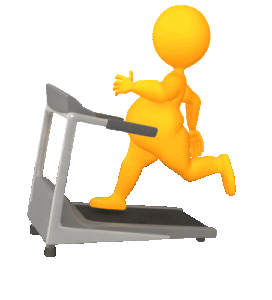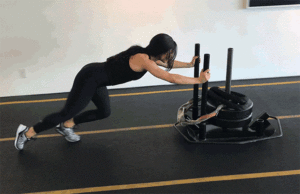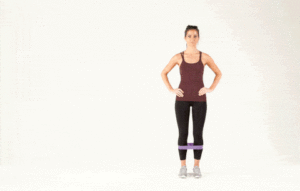Partner Sites
Top 5 Basketball Exercises to Fix Knee Pain
Luol Deng on Handling Injuries
Chicago Bulls sensation Luol Deng offers advice on how to prevent injuries on the hardwood.
I often train high school basketball players who are extremely explosive and can jump through the roof, but they can barely Squat a 45-pound bar with good form without knee pain. This is a recipe for disaster, because their bodies can create a ton of upward force, but when they land, all of the impact goes to their knees. Over time, this can lead to knee tendonitis, inflammation of the tendons around the knee. There’s nothing worse than seeing a young athlete hobbling around the court, saying, “Coach, my knees are killing me.”
The most common factor in knee tendonitis, especially for players making the jump from high school to college, is lack of VMO strength. The VMO (vastus medialis oblique) muscles (in the mid-thigh) extend the knee and are key to decelerating, absorbing force when landing, and closing out on defense.
As a trainer, it’s my job to get my athletes’ legs strong so their bodies can handle the jumping, cutting and overall demands of the sport. The goal before the season should be to squat one and a half to two times your body weight for a 1 rep max, going slightly past parallel. This ensures your legs are strong enough to handle the demands of the season.
Building Blocks for Squats
For those explosive freshmen who have trouble squatting, I like to Front Squat them until they can Squat their body weight (on the bar) for six reps. I do this because Front Squats are a great tool to reinforce proper squatting mechanics. They force you to keep a vertical posture (if your elbows drop, so does the weight). It’s easier for athletes with tight hips to get lower in a Front Squat than a Back Squat, and the repetitions done in the front squat phase will actually work to open up the hips. When the athletes transition to Back Squats, they’ll be smooth and solid. It also helps to keep the weight lighter.
It’s easy to back squat heavy weight with bad form, but it’s almost impossible to front squat heavy weight with bad form. Once my athletes can front squat their body weight for reps, I transition them to Back Squats, and we start the climb to squatting one and half to two times their body weight. This is just one example of what goes into our fall training phase.
Here are my five preventative knee tendonitis exercises, which, done in-season, will prevent knee tendonitis from flaring up, maintain leg strength, improve activation and keep your players from saying, “Coach, my knees are killing me.”
Knee Pain Workout
- Backwards Walk on the incline treadmill, 1×20 steps

- Reverse Sled Drag, 1×40 feet

- Knee Band Press Outs, 1×20 each leg

- Small ROM Leg Press, 1×20 each leg
- Eccentric Leg Extension, 1×20 each leg

Players who have a history of knee tendonitis should do this routine daily. The closer you do it to the start of practice, the better. This ensures the muscles around the knees are warm and ready for the demands of the game.
Recovery
After our fall lifting and conditioning phase—which is usually six to eight weeks of four days a week of lifting and two days a week of conditioning—my guys are strong, in shape and ready to take on the season.
The next challenge is to maintain this strength throughout the season, especially for guys who are expected to play a lot of minutes. It’s all about finding a balance between workload and recovery.
- Rest: Get eight hours of sleep a night. TV off, iPad off, social media off.
- Hydration and eating healthy: Stay hydrated and make healthy eating choices. “If you eat potato chips, you’ll play like potato chips.”
- Treatment: Cold tubs after long practices or games, massages, foam rolling and stretching.
- Maintenance lifts: Lift at the right time of the week to ensure proper recovery before games. Keep lifts simple in-season.
- Preventative maintenance and activation exercises: Do muscle activation daily before practice and movement prep exercises daily to keep problem areas under control.
If you don’t have balance, eventually your players will “under recover,” and you will see flareups with knee tendonitis and breakdowns, which will lead to losses.
Read More:
- Strengthening Exercises to Reduce Knee Pain
- How Basketball Players Can Conquer Knee Pain
- 3 Exercises to Alleviate Knee Pain
- Five Tips to Avoid Knee Pain
Photo Credit: Getty Images // Thinkstock
Topics: KNEE PAIN | TRAIN | RECOVERY | BODY WEIGHT | RECOVER | TENDONITIS
Updated: March 16, 2014
Scott Thom – Scott Thom is the head strength coach for men’s basketball at Washington State University. Previously, he was the strength coach for the University of California-Berkeley men’s basketball team and the head basketball coach for Vintage High School (Napa, Calif.) He has over 10 years of experience worki
Become a Contributing Expert



